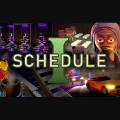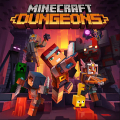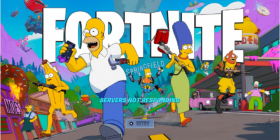Schedule I
Schedule I
Schedule I by Redact Games immediately struck me as the latter — and after spending a few hours in its bleak, mind-bending world, I can confidently say it’s one of the most unnerving experiences I’ve encountered in a long time.
This isn’t a horror game in the conventional sense. It doesn’t throw monsters at you or rely on predictable sound cues. Instead, it plants you inside an abstract, decaying mental landscape where nothing is certain and every step forward feels like slipping deeper into someone else’s nightmare.
The Setup: Minimalism Done Right
Schedule I drops you into a series of stark, empty corridors with almost no exposition. There’s no lengthy intro cutscene, no tutorial prompts cluttering your screen. The game assumes you’re here for the experience, and it wastes no time pulling you into its unsettling world.
You’ll quickly realize that everything about this title leans into minimalism. The visuals are stripped down, featuring low-poly environments that feel like relics of the early 3D era. It might sound underwhelming at first, but trust me — the simplicity works to the game’s advantage. The lack of visual detail forces your mind to fill in the blanks, and what you imagine lurking in the shadows is often more terrifying than anything a developer could render.
Audio Design: Silence as a Weapon
One of Schedule I's greatest strengths is its use of sound, or more accurately, its lack of it. The majority of the game is drenched in oppressive silence, punctuated by occasional environmental noises — a creak, a distant thud, an unsettling static hum. When the audio does spike, it’s never gratuitous. Every sound feels intentional, designed to make you hesitate before stepping around the next corner.
This careful sound design is what kept my nerves frayed throughout my entire playthrough. It’s a masterclass in how restraint can create far more dread than constant noise or cheap audio stingers.
Gameplay: Simplicity That Serves a Purpose
If you’re hoping for intricate puzzles, combat sequences, or branching dialogue options, this isn’t the game for you. Schedule I strips away traditional gameplay elements to focus entirely on atmosphere and environmental storytelling. Your actions are limited to walking, observing, and occasionally interacting with objects.
It’s a slow-burn experience where progression isn’t about defeating enemies or collecting items, but about piecing together what happened — or perhaps, what’s happening inside this abstract reality. It reminded me of titles like Anatomy or Yume Nikki, where the real horror comes from gradually realizing the nature of the world you’re exploring.
Story: Interpret at Your Own Risk
Much like its visuals and mechanics, Schedule I's narrative is elusive. There’s no clear exposition. Instead, the story is scattered throughout the environment in the form of cryptic messages, changing room layouts, and visual clues that shift when you’re not looking.
The game toys with themes of mental illness, isolation, and psychological decay, though it never outright states its intentions. This open-ended approach means every player will come away with a slightly different interpretation of what Schedule I is really about. I found myself theorizing with friends online after my first run, comparing notes and uncovering hidden details I missed the first time around.
Visual Style: Retro Horror Vibes
While the graphics may appear basic by today’s standards, they serve a deliberate purpose. The blocky textures, flat lighting, and rigid geometry evoke early horror games from the PS1 era. This nostalgic aesthetic enhances the unease by triggering subconscious memories of old, unsettling titles that many of us played when we were too young to truly grasp their horror.
The occasional distortion effects and shifting environments add to the disorientation. Rooms don’t always behave as expected; layouts change, objects move, and spaces feel larger or smaller than they should. It’s an effective way to keep the player on edge, never fully trusting their surroundings.
Replay Value: Hidden Layers Await
Schedule I isn’t a long game, with a single playthrough taking roughly 45 minutes to an hour. However, there’s definite replay value for those willing to dig deeper. Several sequences subtly shift based on your actions (or inactions), and there are hidden triggers scattered throughout the environment that can lead to alternate events or endings.
My second and third runs revealed new areas I’d missed entirely, and certain text fragments took on new meanings once I’d seen more of the world. If you enjoy games that reward curiosity and persistence, you’ll find plenty to uncover here.
Final Verdict
Schedule I won’t be for everyone. Its abstract presentation, lack of traditional gameplay, and obscure storytelling mean it’s destined to be a niche favorite rather than a mainstream hit. But for those of us who appreciate psychological horror that lingers long after the credits roll, it’s an unforgettable descent into madness.
I walked away from this game feeling genuinely unsettled — and in the world of indie horror, that’s one of the highest compliments I can give.
















Leave a comment
Your comment is awaiting moderation. We save your draft here
0 Comments